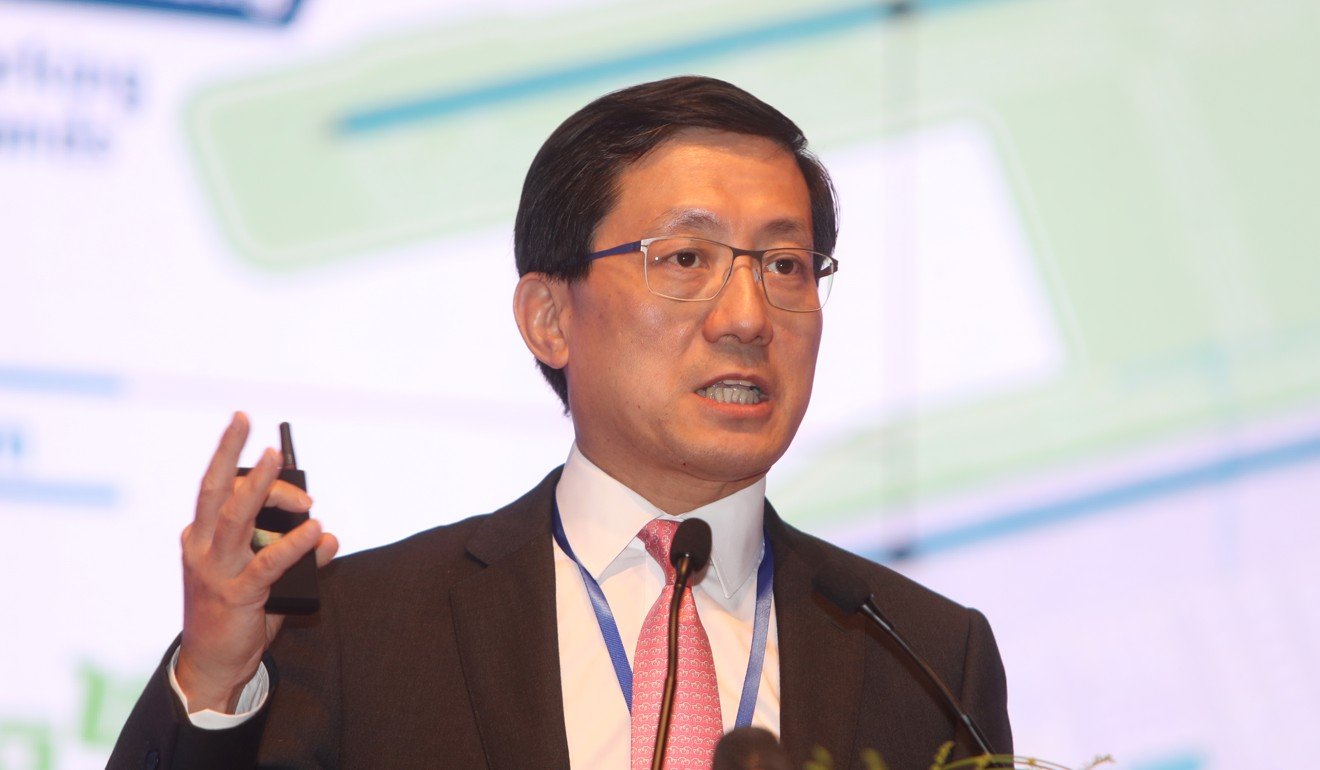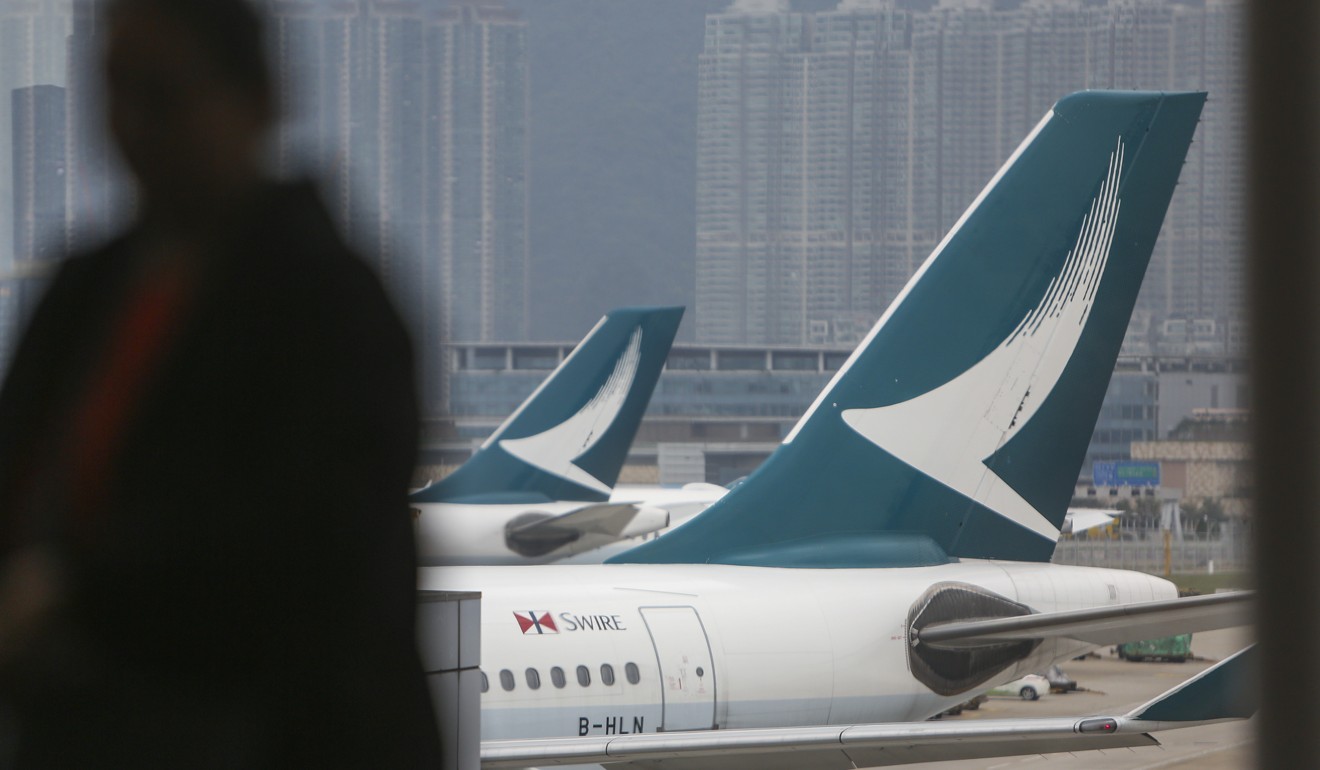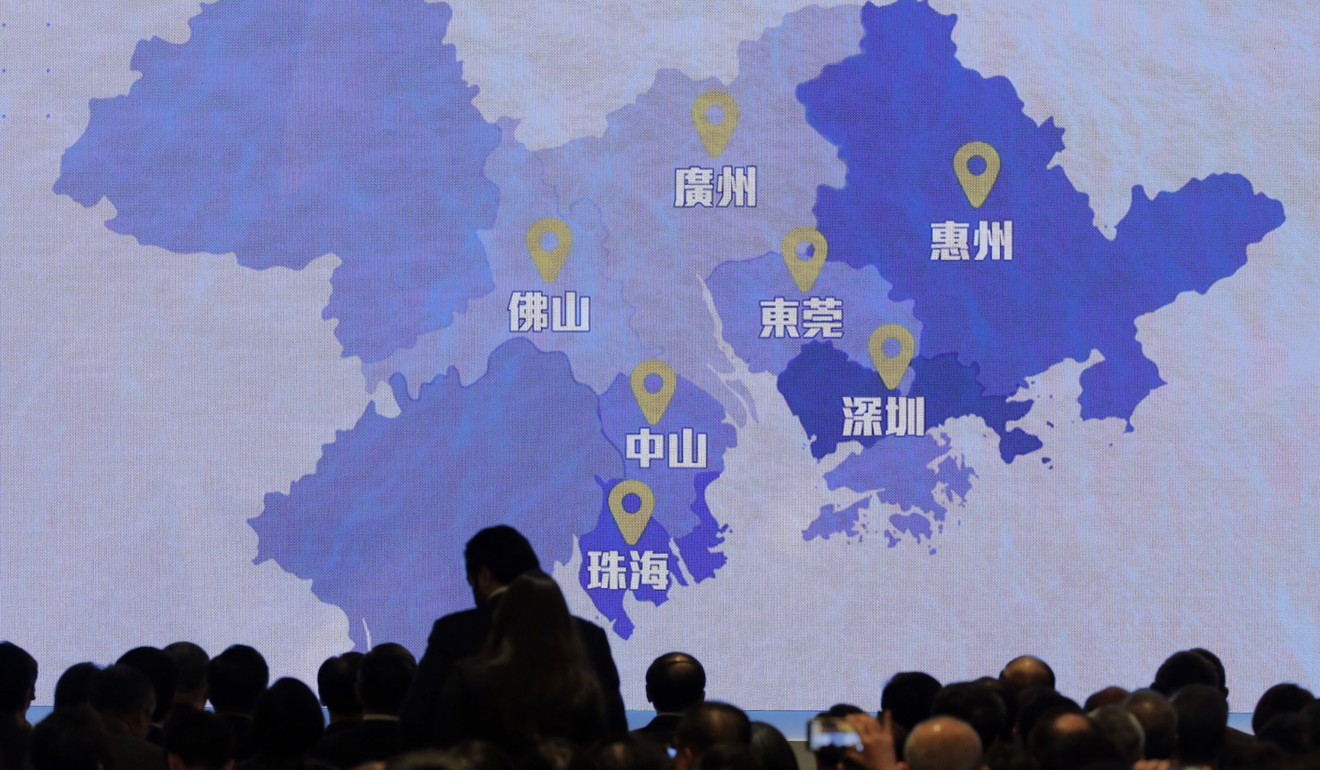
Beijing ‘fully behind’ Hong Kong taking leading aviation role for China’s ambitious global trade and infrastructure projects
- Civil Aviation Administration of China deputy hails Hong Kong as ‘very important location’ for Beijing’s Belt and Road Initiative and Greater Bay Area projects
- Hong Kong’s airport aims to nearly double number of remote check-in and bag-drop facilities in mainland Chinese cities over next six years

Beijing is fully behind Hong Kong taking a leading role as an air hub to help advance China’s ambitious global trade and infrastructure strategy, a top Chinese aviation official told industry leaders on Tuesday.
Civil Aviation Administration of China (CAAC) deputy administrator Dong Zhiyi hailed Hong Kong as a “very important location” for Beijing’s “Belt and Road Initiative” and “Greater Bay Area” projects as the city hosted the fourth Aviation Silk Road International Conference.
As part of Hong Kong’s bay area ambition, the city’s airport aims to nearly double the number of remote check-in and bag-drop facilities in mainland cities to 29 over the next six years, to capture a greater share of cross-border air travellers.
“The CAAC has always paid great attention to the development of civil aviation in Hong Kong,” Dong said. “Next up, we are going to study how we can better plan civil aviation in the Greater Bay Area to have more defined reforms, high-quality coordinated and differentiated development.”

Hong Kong’s role in the bay area, which aims to transform the city and 10 others in the Pearl River Delta into an integrated global economic hub, would be that of a bridge in policy communication, infrastructure connectivity, trade and financing cooperation and cultural exchanges, according to China’s civil aviation regulator.
Hong Kong’s flagship carrier, Cathay Pacific Airways, offered its own suggestions at the conference, including the need for relaxed boundary controls to allow the best use of existing infrastructure and to open up more airspace for civil aviation.
Financial Secretary Paul Chan Mo-po said Hong Kong would seek air service agreements for permission to launch more commercial flights to countries joining the Belt and Road Initiative, China’s grand plan to open up trade and transport links with Central Asia and Europe.
Hong Kong has signed aviation agreements with 67 countries and jurisdictions, 49 of which fall under the belt and road project.
Former Hong Kong leader Leung Chun-ying, a director of the Belt and Road Hong Kong Centre, which co-organised the conference on Tuesday, joined Chan in calling for more air service agreements to cement the city’s role as the anchor in the aviation strategy for both the belt and road and greater bay projects.
The Greater Bay Area blueprint, unveiled by Beijing in February, calls for synergy between Hong Kong, Macau and nine Guangdong cities through the positive interaction of ports and airports in the region.
Hong Kong International Airport boss Fred Lam Tin-fuk hailed the blueprint as a ringing endorsement for one of the city’s key industries.
“The development plan outlined by Beijing really puts Hong Kong International Airport on the map in terms of being the region’s aviation hub,” Lam said.
As one of its first moves, Hong Kong’s airport will set up 13 new upstream check-in facilities by 2025, adding to the 16 already based at ferry terminals, cross-border check points and downtown facilities in bay area cities.
The expansion is part of a wider drive to lure more mainland passengers into using Hong Kong’s airport rather than rivals in Guangzhou or Shenzhen, at the same time boosting aviation links across the region.

Some 14.4 million passengers who flew through Hong Kong’s airport last year made connecting journeys to and from cities in the bay area.
Five airports – all within 150km (93 miles) of each other – currently serve the bay area, and Hong Kong’s is the busiest in terms of routes and traffic, although Shenzhen and Guangzhou are fast catching up.
In 2018, Hong Kong moved 75 million travellers and more than 5 million tonnes of cargo.
“There is an acknowledgement that Hong Kong has strengths in the experience of doing the business of financing, logistics, as well as passenger aviation,” said Andrew Herdman, director general of the Association of Asia Pacific Airlines.
“It is a fact that Hong Kong has great institutional strengths. Hong Kong has always been seen as internationally competitive and in that sense, it brings experience, assets and capabilities to the table. I can see how that fits into the Belt and Road Initiative generally.”

Achim Czerny, an associate professor at the department of logistics and maritime studies at Polytechnic University, said the city’s aviation efforts had to go hand in hand with those of neighbouring airports, even while taking the lead.
“A lot of the collaboration maybe not be happening at the airport level but at the government level,” he said.
“And the whole idea of developing the Greater Bay Area indicates there is a strong sense and understanding it should be developed as a whole, and not with one city taking advantage at the cost of others.”